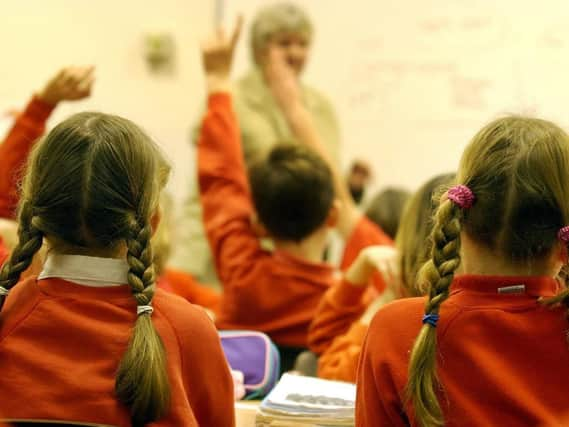Planning for school places is a tough task for Wigan Council


Officers responsible for projecting demand in the borough say an expected influx of 22,500 new homes as part of the GM Spatial Framework (GMSF) is having to be factored in.
This comes as public health bosses have indicated Wigan’s birth rate will fall to lower levels in the next 10 years than in the previous decade.
Advertisement
Hide AdAdvertisement
Hide AdCouncillors were told although these two may balance each other out, they could cause inconsistent levels of demand across different areas.
Members of the children and young people scrutiny committee this week suggested the town hall should consider reforming a dedicated school admissions forum or sub-committee.
Although the council said it has been successful in meeting its statutory duty in providing school places, there were “challenging times ahead”.
Officer Julie Hough said over the last 10 years the number of births across the borough has ranged between 3,200 to 4,000 each year and the council ‘performs exceptionally well’ in terms of providing first preferences across primary and secondary schools.
Advertisement
Hide AdAdvertisement
Hide AdMs Hough also outlined the council has a defined policy for housing developers to contribute section 106 payments to create additional school places.
However, these payments are ‘phased’ as the developments progress, which poses a further challenge in terms of planning for demand.
She said: “Even though a developer may say they’re going to deliver 1,000 homes, they’ll have a planned rate of producing the homes and there will be a kick-in point for when the money will be paid so it might be after 50 homes they’re going to pay £50k but then it’ll be when the next 50 homes are built the next payment will come.
“But you don’t build school places like that, so the phasing of the money isn’t helpful, but it’s better than no money, because some of our neighbouring authorities don’t claim any at all.”
Advertisement
Hide AdAdvertisement
Hide AdCoun Fred Walker, a Labour member, said it was important residents, who believe section 106 money is ‘manna from heaven’, xare aware ‘it costs a lot more than that bit of money to actually run services.’
And colleague Coun Anthony Sykes said the high percentage of good or outstanding schools in the borough along with the high rate of first-choice preferences being met should be commended.
Meanwhile, members also highlighted a rising demand for places for children with special educational needs.
Shevington Independents representative Coun Janet Brown asked whether the council ‘regrets closing some excellent special schools’ in recent years and whether more would have to be built.
Advertisement
Hide AdAdvertisement
Hide AdCabinet members are this week due to discuss plans to invest £34m to improve the borough’s specialist provision.
Assistant director for education, Alan Lindsay, responded: “It has been re-stated nationally that inclusion in mainstream schools is the right approach, we’re not talking in terms of building additional special schools, we need to refurbish the state of some of our special schools, which is not good.
“Most were not built as special schools, they were reconditioned.
“We need to ensure the quality of our schools meet the needs of our children, which have changed, we’ve got more numbers of autistic youngsters for example.
Advertisement
Hide AdAdvertisement
Hide Ad“We need to look at the needs of our children all the time. It’s not about additional schools, but re-shaping the provision we’ve got and in some cases it might mean relocation.”
A consultation is underway on admission arrangements for Wigan borough schools for the 2020/21 academic year with details available on the council’s website www.wigan.gov.uk